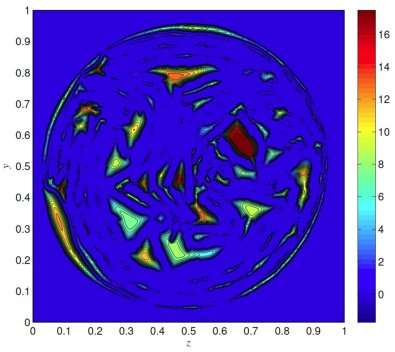Less harmful constituents when heating a cigarette at lower temperature

Many of the harmful constituents found in the smoke from a conventional cigarette result from the burning of tobacco. Lowering the temperature at which the "smoke" is generated means that nicotine and some aroma compounds are still released, but the user may no longer be exposed to many of the combustion products that are generated by the burning of tobacco and which may contribute to the risk of smoking-related diseases.
By measuring the air flow through a tobacco matrix that is heated in a new type of smoking product it may be possible to determine which constituents are released, at which time and at which location. The research of David Lopez Penha of the University of Twente is an important first step in understanding the physics of smoking.
Lopez Penha has investigated flows in porous media, derived from cast leaf tobacco biomass. He has developed a model that predicts the flow of hot air through this highly complex porous medium. For this purpose the 3D pore geometry was reconstructed using microCT-scans (micro-Computed Tomography). For the first time, his work provides some insight into the way that air flows through the small pores inside the tobacco plugs: this could open up a new way of determining which substances may be released and at what concentrations, during the flow of air through heated tobacco matrices.
Aerosols
When a conventional cigarette burns, the burning tip reaches a temperature of about 900 degrees Celsius. This generates the energy for releasing constituents such as nicotine and also flavour and aroma compounds. However, combustion and pyrolysis also results in the generation of many harmful or potentially harmful smoke constituents. More controlled heating of tobacco, at much lower temperatures, enables the release of nicotine and other flavour compounds, but avoids production of most of the combustion products. The aerosol produced has a simpler more predictable composition and may reduce the exposure of the user to harmful constituents, while maintaining the general smoking experience.
For the first time, and as result of Lopez Penha's calculations, a more detailed understanding has emerged of the flow of air in a tobacco plug and the transfer of heat from the tobacco to the aerosol. One of his findings is that, due to the complex web of pore connectivity, both small and large pores are involved in the development of the flow. This insight opens up the possibility to optimize future smoking products – although considerable research is still required before these new products can become commercially available.















